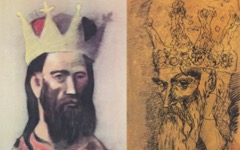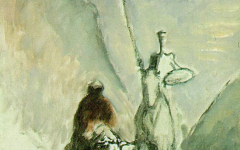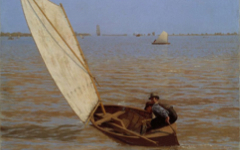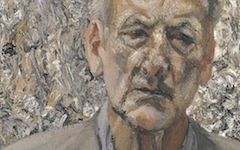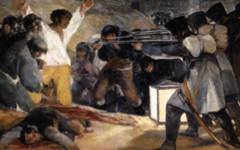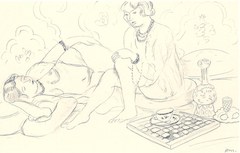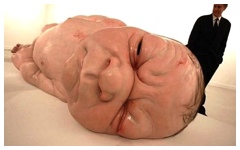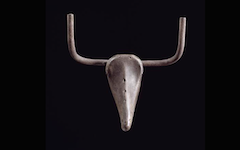Creative Struggle
Great art, far more commonly than is recognized, uses visual metaphor to depict the process of its own creation in the artist’s mind. There are many stages in the conception of an artwork in any media, each with its own specific character. Some, like the initial meditation on a theme, can be relatively passive; others far more active. The process of transforming a mental image into a specific composition can be particularly frustrating and has often been described as a great struggle. We have all experienced at one time or another the agony of a writer as we try to express ourselves in words; artists and composers must do the same with images and sounds. Works of art are not pretty pictures without meaning. They are full of profound thought. The internal effort involved in placing that thought into an image – articulately, concisely and elegantly – can result in a full-scale battle within the psyche. We, the audience, may find that difficult to imagine when the end-result appears so effortless.
Most Recent Articles
All Articles (Alphabetical by Artist, then Title)
Remember a few general principles and you will find that the art of understanding art is much easier than you might magine

Andrea Del Sarto’s Madonna in Gloria (1530)
Bandinelli's statue in Florence, known more for its competition with Michelangelo's David than for the statue itself, has lessons in it which help explain David
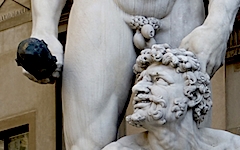
Bandinelli’s Hercules and Cacus (1525-34)
How a seemingly extraneous figure can be the crux of the whole artwork
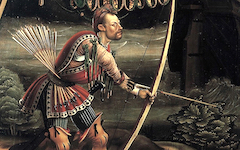
Burgkmair’s Archer in Santa Croce in Gerusalemme (1504)
One of my first discoveries remains, for me, an object lesson in art. Perhaps for you too.

Carpaccio’s St. George and the Dragon (1502)
See how a self-portrait viewed through a different perspective changes everything

Courbet’s The Wounded Man (1844-54)
Is Degas' Little Dancer just a dancer, a study in realism? Or is she......?
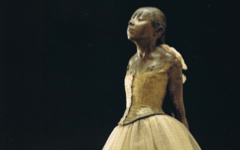
Degas’ Little Dancer Aged Fourteen (1879-81)
Learn how to make sense of Degas' most mystifying composition
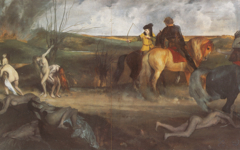
Degas’ Scene of War in the Middle Ages (c.1863-5)
See what Degas makes of a Delacroix and thus, perhaps, what you should too....

Degas’ Study of Delacroix’s Entry of the Crusaders into Constantinople (c.1860)
Find out how to enter an artist's imagination with a bit of your own

Delacroix’s Arab with His Steed or Turk Leading His Horse (c. 1832-3)
Another example of St. Irene "painting" St. Sebastian

Delacroix’s St. Sebastian Helped by the Holy Women (1836)
Discover the secret under Goliath's helmet then know what to look for
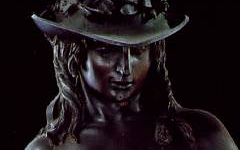
Donatello’s Davids and Goliaths (1410-1440’s)
Here, in a novel turn, the American artist turns a paintbrush into the oars of a scull

Eakins’ The Champion Single Sculls (1871)
Find out how Gauguin's Vision after the Sermon is the Artist's
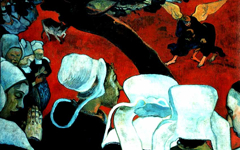
Gauguin’s Vision after the Sermon (1888)
See how a classical legend becomes the perfect setting for an allegory on the artist's studio
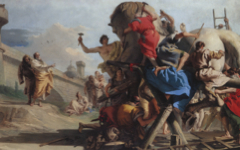
Giandomenico Tiepolo’s Building of the Trojan Horse (c.1773-4)
Leonardo's closely observed landscape turns into something else entirely but only if you expect it
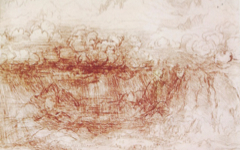
Leonardo’s Storm Over the Alps (c.1499)
How the observations of others can lead to original insights from you
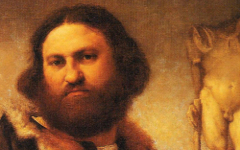
Lotto’s Portrait of Andrea Odoni (1527) Addendum
If an artist's first and last initials are the same, or his initial matches that of his hometown, like Lucas van Leyden's, it is more than likely to appear in his work as well.

Lucas van Leyden’s Standard-Bearer (c.1510)
This early painting by Manet has always troubled interpreters because it seems to make no apparent sense. Its explanation here, though, will help you understand paintings by Manet, Velazquez and other artists too.
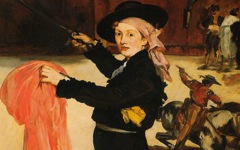
Manet’s Mlle. V in the Costume of an Espada (1862)
Find out what the studio and Golgotha have in common
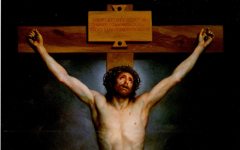
Mengs’ Christ on the Cross (1761-9), Goya’s and Francis Bacon’s too
A mysterious drawing that has never made sense is now explained simply

Michelangelo’s Archers Shooting at a Herm (c.1530) Part 1
There is yet more meaning in the drawing as we see in Part 2 of this analysis
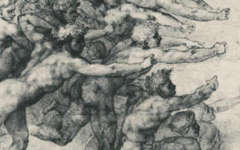
Michelangelo’s Archers Shooting at a Herm (c.1530) Part 2
Michelangelo's strange scene of a battle is not what it seems
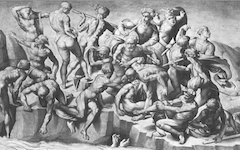
Michelangelo’s Battle of Cascina (1504)
David is not difficult to understand as long as you use the correct perspective
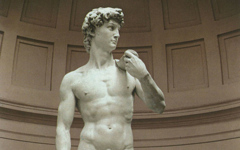
Michelangelo’s David (1501-04)
See why Jonah is the most important figure in the chapel
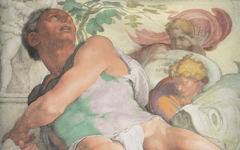
Michelangelo’s Sistine Ceiling: Jonah (1512)
Discover how you can unlock layers of meaning from a relatively simple composition
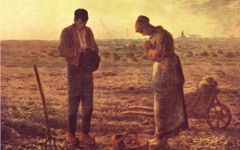
Millet’s The Angelus (1857-9) and other works
Two protagonists in one painting must both represent the artist. It's a given in art so it's your job to find out how.

Picasso’s Cat Catching a Bird (1939)
How we know that the young Picasso knew his destiny
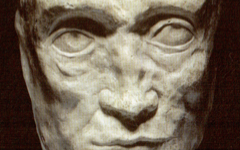
Picasso’s Head of Picador with Broken Nose (1903)
See the sight which changes the meaning of all Rembrandt's art: Rembrandt is Christ
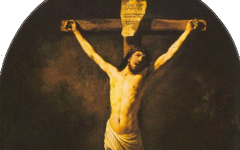
Rembrandt’s Crucifixion (1631)
Several clues, easy to spot, reveal the true underlying meaning of two similar masterpieces

Rembrandt’s Man in Armour (1655) and Minerva (c.1655)
It can be difficult to explain why Rembrandt portrayed himself as a beggar. Here's what I think...

Rembrandt’s Self-portrait as A Beggar Seated on a Bank (1630)
How Rembrandt's method, and that of great artists in general, is present in his earliest extant painting
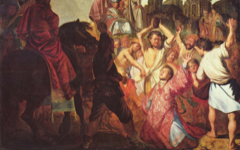
Rembrandt’s The Stoning of St. Stephen (1625)
Once you see how Norman Rockwell, the so-called illustrator, turned contemporary politics into a contemplation on the creative process, you should start to appreciate how ageless the theme is.
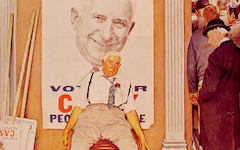
Rockwell’s Before and After (1958)
See how Rubens turned a variation on a Leonardo composition into a scene of creative struggle in his own mind
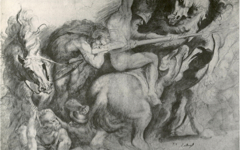
Rubens’ Battle of the Standard (c.1600) after Leonardo
In the epistle of an apostle, the letters matter; as they also do in the self-portrait of a prophet, even if self-proclaimed.
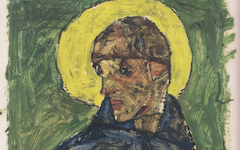
Schiele’s Self-portrait as a Saint (1913)
In Martin Schongauer’s woodcut of St. George and the Dragon, the monster is an alter ego of the artist. Or, at least he represents an aspect of the artist’s mind.

Schongauer’s St. George and the Dragon (c.1480)
One of Titian's masterpieces, it was destroyed by fire in 1577 but recorded in this engraving. Its secret, though, lives on.

Titian’s Battle of Cadore (1538-9)
Train your visual memory to recall similar poses in quite different situations; they usually have some meaning in common
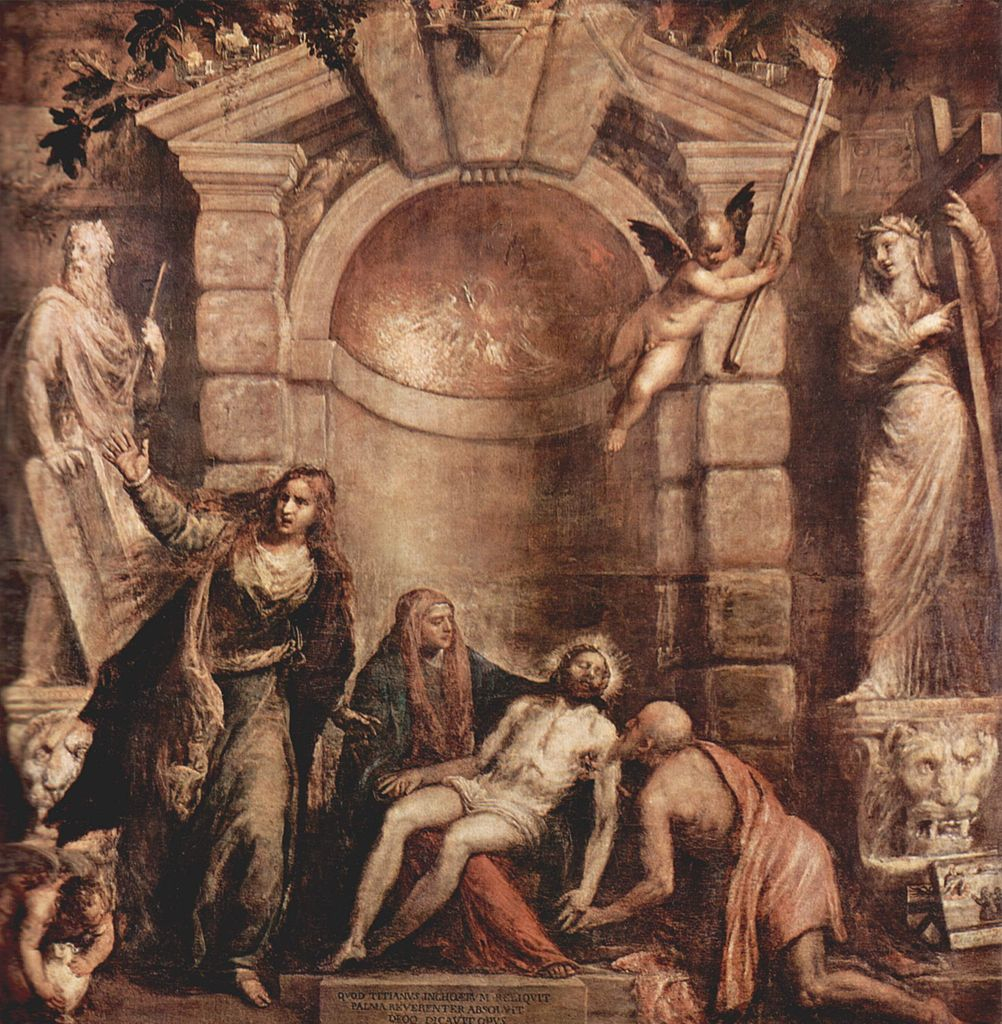
Titian’s Pieta (c.1575)
If a poet uses a storm as a metaphor, who mistakes it for a real storm? Why do so in art?
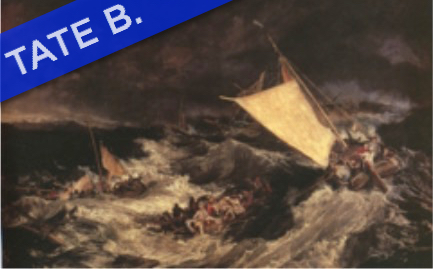
Turner’s The Shipwreck (1805)
The more you try to see what others can't, the more you'll see
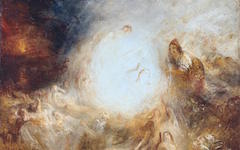
Turner’s Undine Giving the Ring to Masaniello, Fisherman of Naples (c.1845-6)
© Simon Abrahams. Articles on this site are the copyright of Simon Abrahams. To use copyrighted material in print or other media for purposes beyond 'fair use', you must obtain permission from the copyright owner. Websites may link to this page without permission (please do) but may not reproduce the material on their own site without crediting Simon Abrahams and EPPH.
